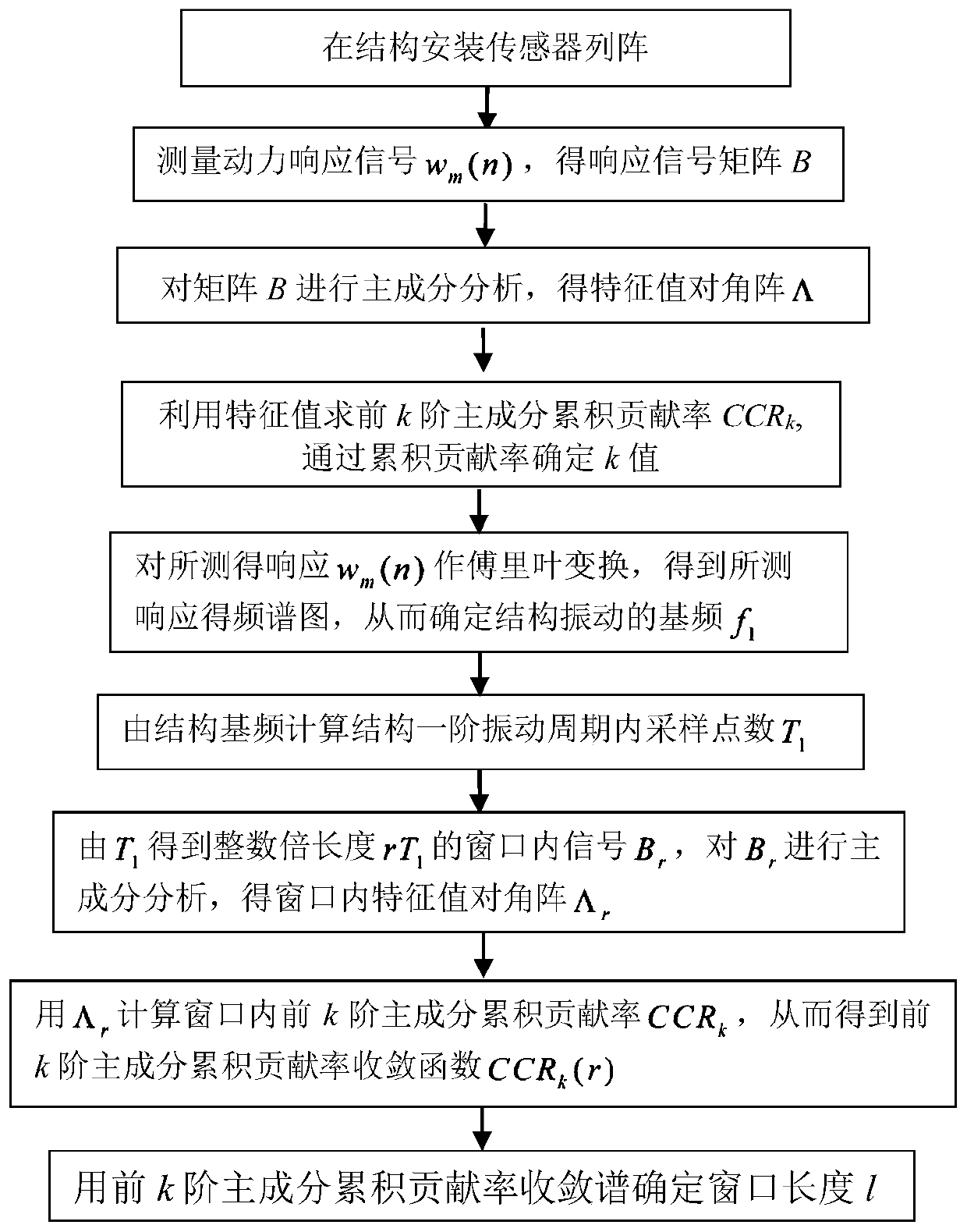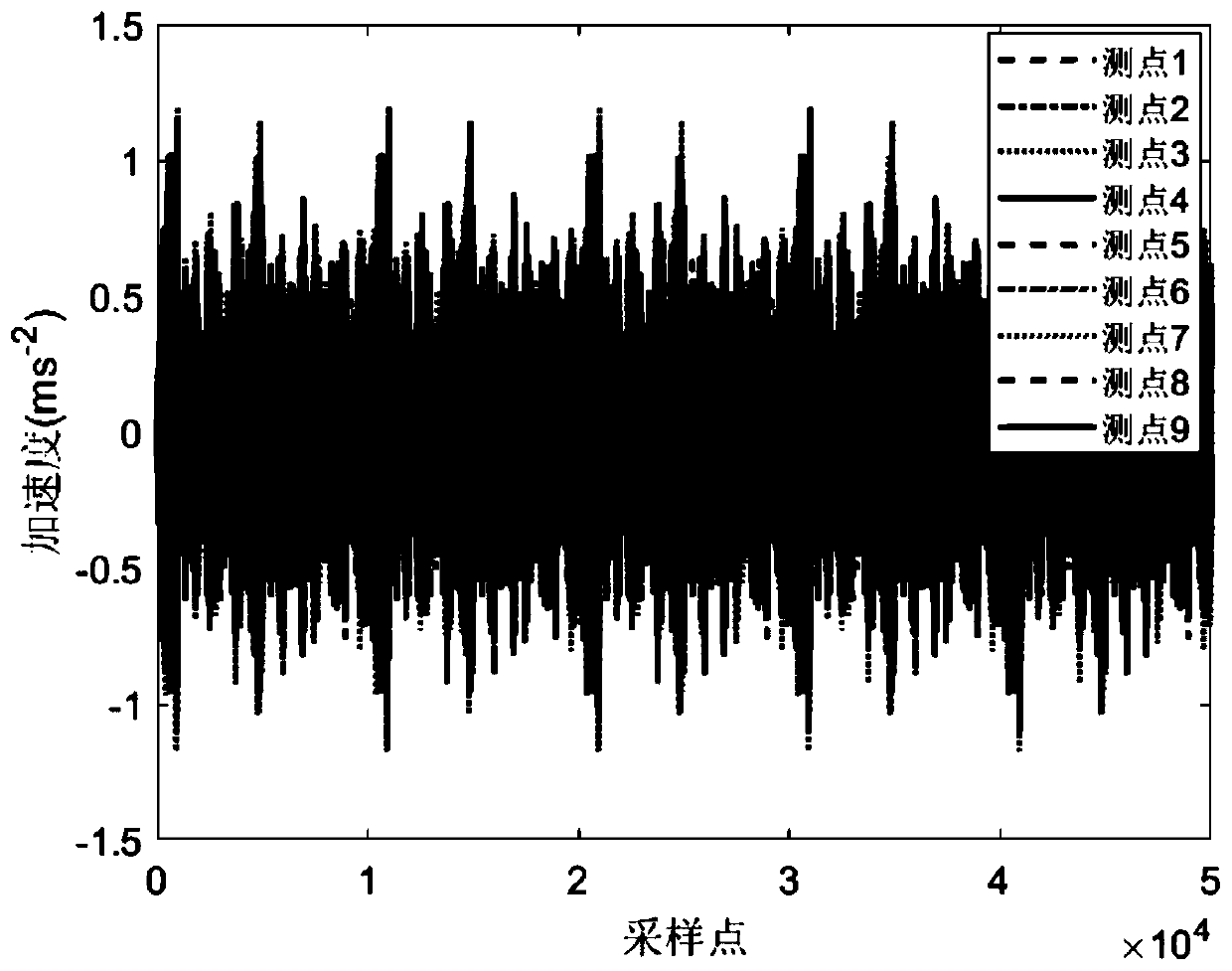A Window Length Determination Method for Moving Principal Component Analysis of Structural Dynamic Response
A principal component analysis and dynamic response technology, applied in instruments, complex mathematical operations, calculations, etc., can solve problems such as inadvisability, surge in calculation amount, delay in health diagnosis time, etc., achieving the effect of small calculation amount and easy operation
- Summary
- Abstract
- Description
- Claims
- Application Information
AI Technical Summary
Problems solved by technology
Method used
Image
Examples
Embodiment
[0048] Such as figure 1 as shown, figure 1 It is a flow chart of the method for determining the window length of the moving principal component analysis based on the structural dynamic response disclosed in the present invention. The structural model used in this embodiment is a steel bridge model, the schematic diagram is as follows figure 2 . The model beam length l is 20m, and the sampling frequency f s 200, the specific implementation process is as follows:
[0049] S1. Measuring the dynamic response of the structure with a sensor array w m (n), to obtain the response signal matrix B, n=1, 2,..., N, m=1, 2,..., M, N is the signal sampling point length, M is the number of measuring points, and N is in the present embodiment 50000, M is 9, the measured dynamic response is as follows image 3 As shown, so the measured response signal matrix B is:
[0050]
[0051] S2, carry out principal component analysis (PCA) to the response signal matrix B in formula (1), get
...
PUM
 Login to View More
Login to View More Abstract
Description
Claims
Application Information
 Login to View More
Login to View More - R&D
- Intellectual Property
- Life Sciences
- Materials
- Tech Scout
- Unparalleled Data Quality
- Higher Quality Content
- 60% Fewer Hallucinations
Browse by: Latest US Patents, China's latest patents, Technical Efficacy Thesaurus, Application Domain, Technology Topic, Popular Technical Reports.
© 2025 PatSnap. All rights reserved.Legal|Privacy policy|Modern Slavery Act Transparency Statement|Sitemap|About US| Contact US: help@patsnap.com



